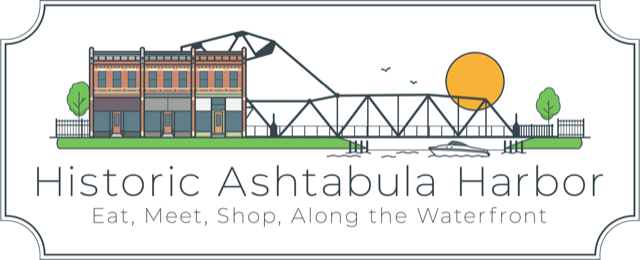Bridge Street
A Culinary, Entertainment, & Recreational Community
Along the Waterfront
About Bridge Street
Among the port where the Ashtabula River meets Lake Erie is a vibrant entertainment district in Northeast Ohio known for its historic buildings, local retail shops, and unique restaurants. During the 19th century, Ashtabula Harbor was considered a major stop on the Underground Railroad during the American Civil War where slaves once boarded ships here to freedom North across Lake Erie on their way to Canada. The area is known for a variety of great events including the Beach Glass Festival, Wine & Walleye Festival and much more. Visit the Historic Ashtabula Harbor to explore a variety of flavors, sights, sounds, and history.
Short Documentary Video on the history
The port of the Historic Ashtabula Harbor is home to a colorful history. In its early days it was one of the busiest (and most dangerous) ports in the world, employing immigrants from many European nations. The early 20th century saw the installation of the historic “Hulett” ore unloading machines. The port expanded in the early 1950’s during the postwar era to serve the needs of growing industry. Today, it is a taconite, stone and bulk materials port serving self-unloading vessels, as well as a recreational port with marinas and fishing charters. In each era, the port has provided economic opportunity, recreation and entertainment to generations of Ashtabula residents and visitors. With miles of railroad tracks holding hundreds of hopper cars filled with iron ore, and towering bridges still present today, Bridge Street is home to a busy port, the cleanest river on Lake Erie, and the largest private dock on the Great Lakes.
During the summer, huge freighters arrive at the dock, allowing visitors to the Historic District to look on as these large ships unload their cargo just a few feet from the Bascule Lift Bridge. Every half hour the cantilever Lift Bridge rises while fishing boats, yachts, and sail boats make their way under the steel framed bridge.
With the area already dealing with circumstances of the post Rust Belt Era, 2008 became a critical time for Bridge Street after the Ohio Department of Transportation announced plans to close the Lift Bridge for an extended period for repairs. The Lift Bridge Community Association formed to combat the negative impact the closing would cause for the businesses along Bridge Street.
The Lift Bridge Community Association (LBCA) began by establishing traffic-generating events such as the Wine and Walleye Festival, which still is held annually to this day.
In addition, the LBCA began to address longer-range issues, such as taking advantage of its designation on the National Register of Historic Places, and applying for grants to renovate the historic buildings on the street. Several local entrepreneurs were inspired to make the Harbor the home of their business and were awarded loans through the New Entrepreneurs Opportunity Fund, a micro-enterprise lender which provided access to capital as well as monthly training classes to anyone in the county looking to run a small business.
The success of the Harbor has allowed has created a robust food scene that is home to chef-inspired and award winning restaurants such as Briquettes Smokehouse, Rennick Meat Market, Bascule Bridge Grille, and the 50-year veteran anchor on the block, Hil-Mak Seafood. Retail businesses including Harbor Perk Coffee House, Carlisle’s Home in the Harbor, Bridge Street Art Works, and several other boutiques, giving visitors and regulars alike a year round shopping opportunity.
Over time, the Ashtabula Harbor has purposefully evolved into a popular regional recreation, entertainment and tourism destination for both locals and visitors, with attractions such as several adjacent parks and beaches, multiple marinas and museums, kayaking and canoeing along the river, and a walking tours of the historic buildings lining Bridge Street.
This recognition of Ashtabula’s Bridge Street corridor as America’s Main Street in 2018 acknowledges that local efforts to revitalize the district have not only put it on the map, but are making waves across the region and nation as others discover this special place to live, work, and visit.

